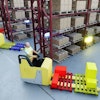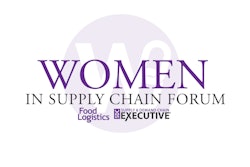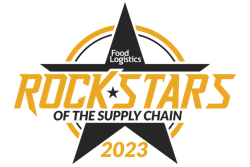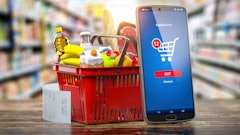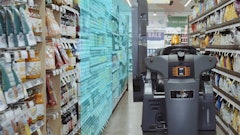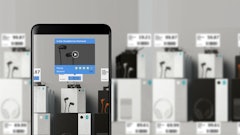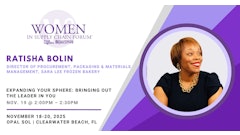
A recent global benchmark report revealed that retail distributors experience an annual revenue loss in the range of 7.25-28.47% due to sub-par sales practices and an annual margin loss in the range of 2.89-15.70% due to sub-par pricing practices.
Did you know that 90% of B2B buyers stated they’d switch to a competitor if a supplier's digital channel couldn't keep up with their needs and 87% of buyers would pay more for a supplier with an excellent e-commerce portal?
With the shift to digital channels, food and beverage wholesalers and distributors now have unique opportunities to reclaim lost opportunities and revenue if proactive measures are implemented.
Revenue and scaling
It's time to start thinking about the bottom line.
It's easy to focus on customer acquisition and forget about the important revenue left behind on the table. The best performing food and beverage wholesalers know that growing revenue only through new customer acquisition is a less efficient way to scale, whereas growing revenue by keeping low churn through up-sells, cross-sells and expanded use is the most profitable way to scale.
However, scaling in the most profitable way is challenging when you have hundreds of thousands of products and thousands of customers. Most independent food and beverage sales reps are quite familiar with their Top 10 accounts, including product categories and product ranges. They have a good grasp of their customers' demands and can quickly tailor up-sells and cross-sells.
The other long tail of accounts, which on average generates 20% of revenues, is left behind. Food and beverage distributors are missing out on sales because they don't understand their customers. B2B wholesalers who lack the ability to accurately determine customer behavior often find themselves swimming in a sea of mediocrity, struggling against competitors who pay more attention to their customers' needs.
Sales and customer knowledge
Do you sell a wide range of products? Is the sales team just familiar with a few product categories? Do any of these questions ring a bell? If that's the case, you could be one of the many food and beverage wholesale distributors losing money as a result of poor sales techniques.
But what if you could harness a truly omnichannel B2B sales solution to understand your customers better?
Imagine being able to track:
• List of accounts with a drop in sales over the previous months
• Accounts that are below average
• Abandoned carts
• Average order size per channel
• Average order size per product category
• Product categories per customer/per segment
· Frequently bought items
• Financial progress of a specific buyer
• Buyer report for reps
Pricing management
Wouldn't that make a difference in how you run your business? No doubt it’s a good start but not sufficient, as dealing with disorganized pricing data impacts profit and loss even more.
How many times have you said “no” to various B2B e-commerce vendors that weren’t able to accommodate your complex pricing structure, including complex promotions and surcharges that are calculated in the backend of the enterprise resource planning (ERP) system?
How many times have you wondered if a shortlisted B2B e-commerce platform is capable of supporting these custom prices/charges?
How can you make sure that the prices provided to customers in offline settings correspond to the prices displayed on an e-commerce platform, and that each customer receives the correct pricing information based on their individual contracts?
For any wholesale distributor, pricing is crucial. Pricing for customer groups and purchasing groups can be a very difficult task. Prices are determined by a range of elements, including order frequency, urgency, product categories, payment and delivery conditions, warranty and purchase quantity and they get more difficult to set as the number of SKUs grows.
A typical buyer may have many contracts and orders, which complicates the pricing calculation and requires the inclusion of other variables such as volume-based discounts. When a customer with multiple contracts places an order, the system must also know which contract to reference. Complex pricing is typically what keeps food and beverage wholesalers from adopting B2B e-commerce. Buyers expect to see the contractually defined prices when they log into their B2B self-service portal.
Many food and beverage distribution and wholesale companies struggle with the high complexity of pricing for their digital sales channels. Pricing isn't static, prices change frequently in today's economy. Competition may force you to adjust prices at any moment to remain competitive, but without a solution that syncs to the price changes happening across your many channels, you could easily miss one or more prices while updating them all individually. Maintaining consistent and accurate pricing across channels can be difficult and costly; if your pricing isn't exactly the same on every channel then customers may notice discrepancies between them and choose your competitors instead.
Managing complex pricing and promotions
The key to managing pricing complexity across all channels and maximizing profit margins is having a B2B e-commerce solution that can handle all kinds of pricing needs, whether it be simple or complex, so that you can go around and market what matters the most to both your company and clients alike. Here are some tips on how to do just that:
• Group customers according to their price point or tier so they can be charged differently depending on which group they fall under.
• Include the same product at several different price points and create customized versions of each catalog depending on what kind of customer wants it.
• Automate discounts by setting them up at various levels such as individual items, accounts, brands etc. If possible, use business rules set up specifically for your company.
• Set prices based on volume or quantity.
• Use multiple currencies.
Flexible pricing options allow for innovation and experimentation, especially in B2B e-commerce. A transparent, single source of truth is key to digital commerce success and is necessary when food and beverage distributors create an enterprise solution with B2B buyers.
Experimenting with prices can change up your bottom line so it's important to keep an eye on what has the biggest impact or ROI for your business.
Gaining relevant insights and dealing with unstructured pricing data across channels may seem daunting at first, but it will help reclaim lost opportunities by preventing B2B buyers from switching suppliers, as well as enhancing overall business growth.

